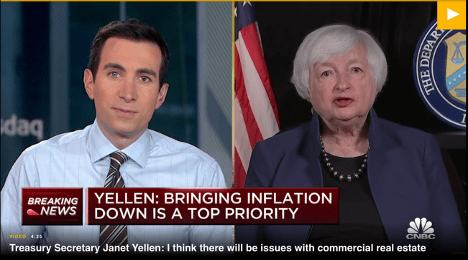AI.
Those two letters are the extent of what many people know about artificial intelligence. Others have become experts by downloading apps that generate answers to questions using AI.
This is an example of how a little knowledge can be a dangerous thing. AI answers depend on the question. If you’re writing an essay for an introductory-level college class, almost any question (or prompt as they’re called) will deliver a good enough answer.
But if you want to know what an abnormal reading on a blood test means, a bad prompt can lead to a bad answer. Doctors consider results of other tests to put an abnormal result in context. Failing to do that could lead to the wrong answer … and potentially a dangerous diagnosis.
Someday, AI should be able to consider all the different variables a doctor considers. But when that day comes, you may still prefer the real-life doctor to review your results. Because humans encounter anomalies in their experience that AI may not be able to account for.
Analyzing stocks isn’t as critical as interpreting medical results. Yet there are some similarities worth noting … and some potential applications that we can use to trade profitably today.
Traditional Strategies vs. Future AI Models
Stock market data often includes anomalies. In more technical terms, these are the statistical outliers.
Many traders believe the bulk of their profits come from the outliers. Testing confirms that for many strategies.
You could ask AI to identify the outliers. But that might not be useful on its own. It’s not a strategy to trade when there are anomalies in data.
Investing strategies need to be based on a sound logic. There needs to be a reason the outliers are important. Otherwise, you’re just trading statistical noise. In the long run, that’s almost certain to result in losses.
Traditional trading strategies are based on past market action. Maybe you buy undervalued companies because some of them have delivered large gains in the past. Or you trade based on moving averages because they offer profitable signals in the long run.
Those strategies are based on historic probabilities. AI strategies are different in that they forecast the future, and trading decisions are based on these implied probabilities.
AI will be a challenge to implement in the stock market. But it offers great potential.
I’ve been experimenting with AI models for the past few months, and I’d like to share the potential I’ve found in them…
Uncovering Hidden Patterns With AI
To create an AI model, you start with a history of what’s happened in the markets. Maybe you look for previous times when the data shows price action was similar to what we saw in the past month. Then you use those examples to find a price target.
This is much different than a traditional model. We had to define the model in the past. Maybe we said: “Show what happens when prices cross above a 50-day moving average.” Then we created a database of those trades and analyzed the results.
Now, we are looking at the recent price action. Maybe there were 15 up days in the past 20 trading days for one stock. Another stock shows 14 straight down days. A third shows back-and-forth price action and no net progress for 10 days.
An AI model can find these patterns in individual stocks. It can run through the historical results when similar patterns unfolded.
The difference is that AI models aren’t limited to signals you see and define. If set up correctly, AI finds hidden patterns. It tests those patterns and identifies them to you if they are statistically significant.
The model might identify dozens of potential opportunities and present you with options. Or the model might weigh each opportunity based on history and give you a single projection.
This is a promising change in how we trade — if done well. If handled poorly, it’ll be a new way to lose money quickly.
If you’ve been following me for some time, you know that I’m serious about innovation, particularly when it comes to improving trading systems and staying adaptable to the markets. I’m always looking for the newest way to sharpen my edge as a trader.
Naturally, I’m testing a brand-new AI strategy in our Trade Room right now to help diversify our growing collection of profitable trading strategies.
It’s exciting when a new project like this one shows promise. But it’s also important to carefully test new technologies. And testing it publicly like we do in the live room allows for a larger audience to determine how well it works in real time.
For details on how you can get access to my latest research, along with my other time-tested strategies in the Trade Room, click here.
Regards, Michael CarrEditor, Precision Profits
Michael CarrEditor, Precision Profits
U.S. Treasury Secretary Sees the Problem of Commercial Real Estate
(From CNBC: Interview with Treasury Secretary Janet Yellen.)
Treasury Secretary Janet Yellen sat down for a chat with CNBC’s Ross Sorkin yesterday, and she had some interesting things to say about commercial real estate:
“Well, I do think there will be issues with respect to commercial real estate. Certainty the demand for office space since we’ve seen such a big change in attitudes and behavior toward remote work has changed and especially in an environment of higher interest rates.”
Well, well!
I don’t know if Secretary Yellen reads The Banyan Edge, but I’ll point out that Mike Carr wrote about this problem three weeks ago. He then followed up with me about it in The Banyan Edge Podcast.
I really want to believe that the person in charge of my country’s treasury has better, or at least more detailed data, than we do. Though it really doesn’t seem like it.
Mike covered virtually all of her major points weeks before she did.
And what exactly are those issues?
Banks Own Commercial Debt
Banks are major owners of commercial property debt. And some of the property that secures that debt, such as office towers, are at risk of major price declines as tenants renegotiate leases and reduce square footage.
Let’s play with those numbers.
The typical loan to value ratio of a commercial property is around 80%. That means that on a typical building costing $10 million, $8 million of that would be financed with a loan, and with only $2 million in equity.
Now, in a normal world, that’s not a big deal. The holder of the loan has a large equity buffer.
Prices would have to decline by more than 20% for the loan to be underwater — meaning the property is worth less than the debt used to finance it. And declines like that on high-quality properties rarely happen.
The problem is that these are not normal times. We entered the pandemic with very rich prices in commercial property after more than a decade of low interest rates.
And then the pandemic hit. Remote work became more acceptable, and the demand for leasing offices fell. If that wasn’t bad enough, financing costs also shot through the roof, making it a lot more expensive to hold a property.
Suddenly, that 20% buffer doesn’t look big enough. Mike mentioned a high-profile building in San Francisco that just sold for 78% below its pre-pandemic prices.
That is a disaster.
But the good news is that we don’t have to just grin and bear it. Right now, Mike’s working on adapting AI into his trading strategy — specifically in his Trade Room. Want to learn more about how Mike trades and invests?
Regards, Charles SizemoreChief Editor, The Banyan Edge
Charles SizemoreChief Editor, The Banyan Edge






